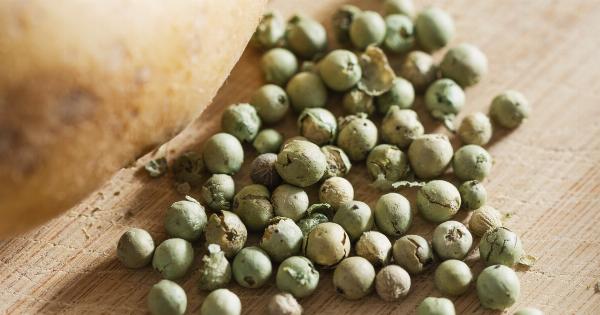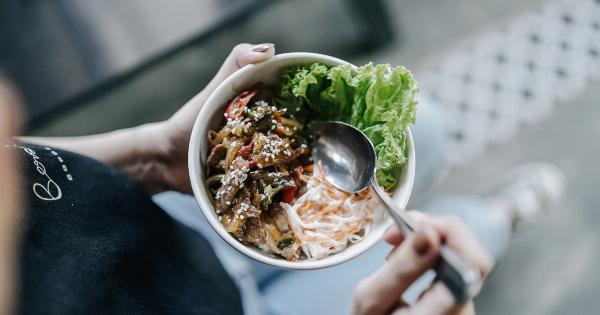Dealing with acid reflux symptoms can be uncomfortable and disruptive to your daily life. However, with the right cooking strategies and meal planning, you can effectively manage these symptoms and promote digestive wellness.
This article explores various techniques and ingredients that are beneficial for individuals struggling with acid reflux.
Understanding Acid Reflux
Before diving into cooking strategies, it’s important to have a basic understanding of acid reflux. Acid reflux occurs when the lower esophageal sphincter (LES) fails to close properly, allowing stomach acid to flow back into the esophagus.
This can lead to symptoms such as heartburn, regurgitation, chest pain, and difficulty swallowing.
Identifying Trigger Foods
One of the first steps in managing acid reflux is to identify trigger foods that worsen symptoms. Common trigger foods include spicy foods, citrus fruits, tomatoes, fatty or fried foods, chocolate, caffeine, and carbonated beverages.
By avoiding or minimizing consumption of these foods, you can significantly reduce acid reflux symptoms.
Opt for Lean Proteins
When it comes to cooking meals that are gentle on the digestive system, lean proteins are an excellent choice. Opt for lean cuts of poultry, fish, or beef, and avoid frying them.
Instead, try grilling, baking, or broiling for healthier preparation methods.
Incorporate Whole Grains
Whole grains are rich in fiber, which aids digestion and helps prevent acid reflux symptoms. Choose whole grain options such as brown rice, whole wheat bread, quinoa, and oats.
These grains are not only nutritious but also delicious and versatile in various recipes.
Savor the Goodness of Fruits and Vegetables
While some fruits and vegetables can aggravate acid reflux symptoms, many others are actually beneficial for your digestive health. Incorporate fruits like bananas, melons, apples, and pears into your diet as they are less likely to trigger acid reflux.
As for vegetables, opt for non-acidic choices such as broccoli, leafy greens, cauliflower, and cucumbers.
Choose Healthy Fats
While certain fats can exacerbate acid reflux symptoms, it’s essential to include healthy fats in your diet. Extra-virgin olive oil, avocado, and nuts are excellent sources of healthy fats that can be used in various cooking techniques.
These fats not only add flavor but can also support a healthy digestive system.
Stay Hydrated
Proper hydration is essential for managing acid reflux symptoms. Drinking enough water throughout the day helps dilute stomach acid and aids digestion.
Make sure to avoid excessive consumption of carbonated beverages, alcohol, and caffeinated drinks, as they can worsen acid reflux symptoms.
Small, Frequent Meals
Eating large meals can put pressure on the LES and lead to acid reflux symptoms. Instead, opt for smaller, more frequent meals to help maintain proper digestion and reduce the likelihood of reflux.
Plan your meals in advance to ensure you have healthy options readily available.
Consider Meal Timing
The timing of your meals can also impact acid reflux symptoms. It’s recommended to eat at least two to three hours before lying down or going to bed.
This allows sufficient time for digestion and reduces the risk of stomach acid flowing back into the esophagus while in a horizontal position.
Cooking Techniques and Recipes for Acid Reflux-Friendly Meals
Now that you’re familiar with various cooking strategies, let’s explore some specific techniques and recipes for acid reflux-friendly meals:.
Steamed Fish with Lemon and Herbs
This delicious recipe combines the goodness of lean protein and the digestion-friendly properties of fresh herbs.
Steam a piece of white fish, such as cod or tilapia, with a squeeze of lemon juice, a sprinkle of fresh herbs like parsley or dill, and a pinch of salt and pepper. Serve with a side of steamed veggies and brown rice.
Oatmeal with Banana and Almonds
Oatmeal is a versatile and gut-friendly breakfast option. Prepare a bowl of oatmeal with water or almond milk and top it with sliced bananas, a drizzle of honey, and a handful of almonds.
This fiber-rich combination will keep you feeling full and satisfied while promoting healthy digestion.
Grilled Chicken and Vegetable Skewers
Grilled skewers are not only visually appealing but also easy to prepare. Marinate chunks of chicken breast in a mixture of olive oil, garlic, and your choice of herbs and spices.
Alternate the chicken with non-acidic vegetables like cherry tomatoes, zucchini, and bell peppers. Grill until the chicken is cooked through and serve with a side of whole grain couscous.
Baked Sweet Potato with Avocado and Salsa
This quick and flavorful meal pairs the nutritional benefits of sweet potatoes with the healthy fats of avocado. Begin by baking a sweet potato until tender. Mash the sweet potato flesh with a fork and top it with sliced avocado and a spoonful of salsa.
The combination of flavors and textures makes it a satisfying option.
Roasted Turkey Breast with Steamed Broccoli
Roasted turkey breast is a lean and protein-packed option that pairs well with steamed broccoli. Season the turkey breast with a blend of herbs and roast it in the oven until fully cooked.
Serve with a side of steamed broccoli, seasoned with a drizzle of olive oil and a sprinkle of salt and pepper.
With these cooking strategies and acid reflux-friendly recipes, you can enjoy a diverse range of delicious meals while effectively managing your symptoms.
Remember to listen to your body, experiment with different ingredients, and consult your healthcare provider for personalized dietary advice.




























